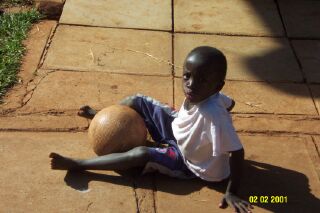Why is the vaccine based on the A subtype of HIV?
There are ten derived types of HIV-1 the main AIDS virus. Five of these are common. Different derived types or strains happen in various parts of the world. In the UK, Europe and North America the common strain is B, in Southern Africa and India the C subtype prevails, in East, Central and West Africa the A clade is the commonest. This vaccine is grounded on A strain HIV and is at the end found at Kenya. After trying in Oxford, it can be tired in Nairobi by our cooperators in the University of Nariobi and My Canadian Pharmacy assistants.
How different are the strains?
Each diverses from the other by about 10%. This implies that while an immune reaction to one should cross-react with another but that reaction will be more feebale. This could be critical if the vaccine is only partly efficient. It is reasonable to test to suit the vaccine to the dominant strain.
How bad is the epidemic in Africa?
The scale is almost unexplainable. Generally, there are 28.1 million people infected with HIV in Africa, two thirds of all occasions worldwide. In the southern African countries, South Africa, Botswana and Namibia one third of all women visiting ante-natal hospitals are infected. The figure is identical in some parts of Kenya. In South Africa there are now more deaths in 30-40 year olds than in 60-70 year olds, a dramatic distinction from 1990. The life time risk of AIDS for a 15-year old in Botswana is nearly 90%, in Kenya it is 50%. Probable duration of life is decreasing fast, it has been halved in Botswana.
Whom does it affect?
Men, women and children, all races and all social classes. In many African countries the whole social fabric is scared. Doctors, nurses, teachers, lawyers, business men, community leaders are all being damaged by this virus.
Is this the worst epidemic of all time?
It is already one of the most huge epidemics in registered history. 2.3 million people died of AIDS last year, Since the epidemic started, 21.1 million have died if AIDS and there is no symptom that the epidemic is going to disappear.
Can drugs help?
In the United States and other developed and wealthy countries the emergence of potent anti-retroviral drugs has decreased the amaont of deaths from AIDS considerably. Order such drugs via https://mycanadianpharmacyteam.com/. Nevertheless patients must take the drugs for a prolonged time, possibly for life and no patient has yet been treated absolutely. The drugs cost as much as £10,000 ($15,000) per year. In developing countries such as Kenya these drugs are out of reach of virtually all patients. Even if they cost one hundredth of the current price, they would still be too expensive. Also their usage demands a cultivated medical ground environment that is not there in most countries. The only ray of hope at the moment appears from investigations that exhibit that transmission of virus from mother to baby can be more than halved by quite simple and cheap usage of these drugs. Some African countries are starting to utilize these drugs.
Why have the pharmaceutical companies not developed a vaccine?
The great facilities have some interest, but improvement of a vaccine costs in the region of £300 million. They demand to compensate their prices and calculate that they are unlikely to be capable to perform this in developing countries such as Kenya. Therefore they are only really engaged in the Western and Northern markets and the B strain of virus.
Where does the International AIDS Vaccine Initiative (IAVI) come in?
IAVI was grounded in 1996 to stir up the above situation. They are now mainaining four crews, some in University laboratories such as our group, others in small biotechnology facilities. They will search the money to pay for the experiments and if there is such a necessity, the later levels of vaccine production. They will also assure that patent rights are recoiled for developing countries, decreasing the prices of the ultimate vaccine. Great opponents of IAVI are the British, Dutch and Canadian Governments and the Bill and Melinda Gates Foundation.
What can be done?
There is a despairing demand for a vaccine. That is why we are starting to try our vaccines. We do not guess whether they will perform, but prior investigations in animals with other viruses that exhibit that this method can be used. The experiments will proceed through a scheduled course, each step being dependent on the outcome of the prior one. If all performs really well our vaccine could be tried for effectiveness in high risk persons in about five years; it would then take a further five years to turn this into a real vaccine. In the meantime, safe sex messages, education, treatment of other sexually transmitted diseases are all we have, but there is some evidence that these can decrease incidence in parts of Africa such as Uganda and Senegal.
How can I help?
The AIDS epidemic is far less good than any of the recent starvation. AIDS will soon have killed more people than all of the wars of the 20th century. Although grants are welcome, the sums demanded are great and contributions of millions of pounds are demanded. Huge charities, business and governments will have to fund this. From people interested in this catastrophic health problem, a suggestion to assist in one of the vaccine experiments is far more precious. These experiments are vivid to initiate a vaccine programme. If you have any interest in volunteering please refer to the home page.
(Figures are from the latest Report on the Global HIV/AIDS epidemic, published by UNAIDS: http://www.unaids.org on December 2001)



